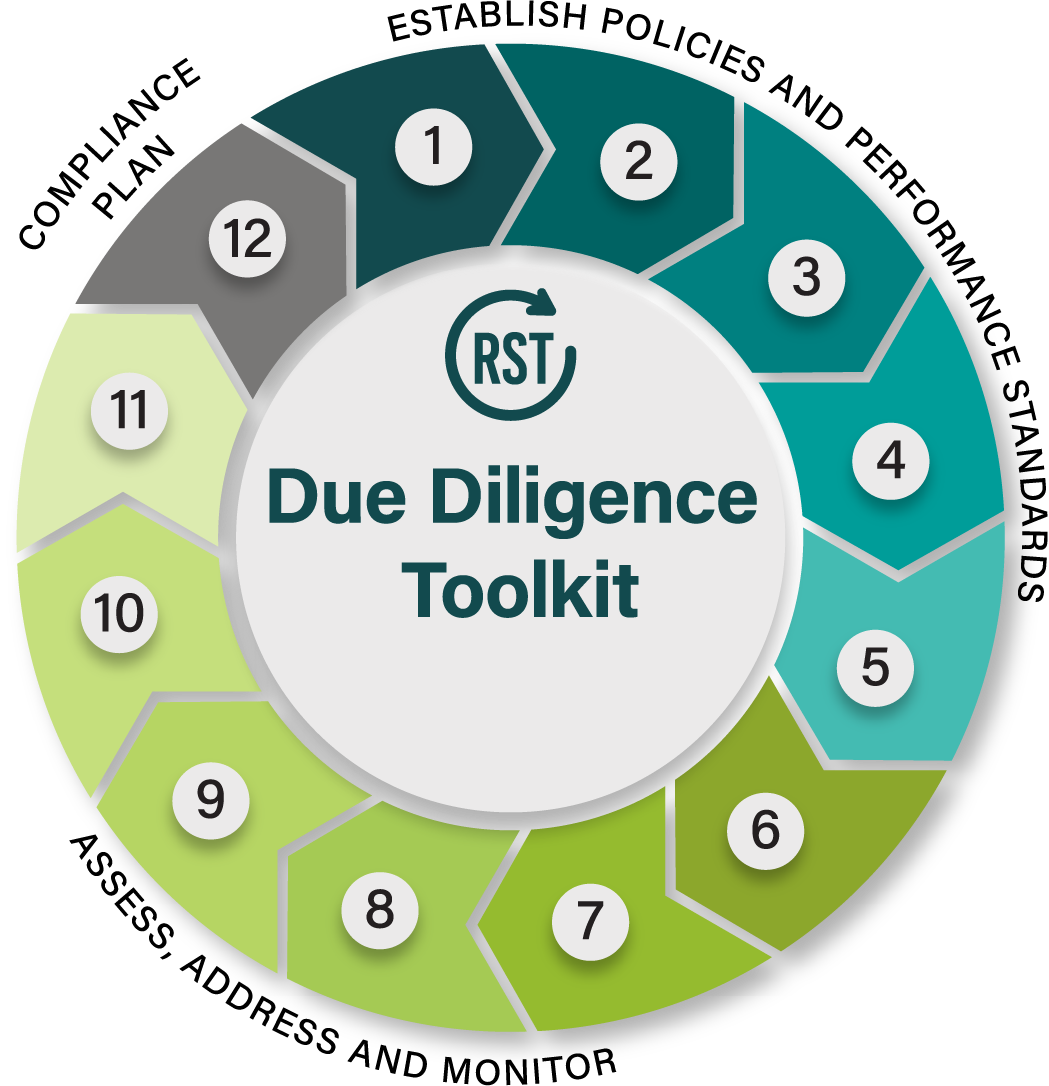Private Security
Industry Toolset
Prevent and Address Forced Labor in Your Company’s Supply Chains 

Introduction & Framing
The sector is one of the fastest growing global sectors and security personnel are often called upon to work in complex and hazardous environments. In addition to physical safety risk, indicators of forced labor and other abuses are seen throughout the recruitment, hiring, and employment cycle.
Tool 1: Supply Chain Due Diligence Process
[View Tool 1]Tool 1 describes the fundamental systems approach to risk management, known as “Identify, Evaluate, Control, and Monitor,” and provides the underlying principles to follow when implementing a process for identifying human trafficking and developing solutions.
Tool 2: Code of Conduct
[View Tool 2]A Code of Conduct establishes basic performance expectations for subcontractors, suppliers, and labor agents. Codes of Conduct and/or other sourcing policies should explicitly prohibit human trafficking and include protections for workers.
Tool 3: Performance Benchmarks
[View Tool 3]Benchmarks can be used to evaluate the labor and human rights performance of subcontractors, suppliers, and labor agents. The benchmarks included in this tool can help evaluate the implementation of the anti-trafficking policies laid out in Tool 2.
Tool 4: Country-Level Review of Legal Protections Against Human Trafficking
[View Tool 4]Tool 4 provides guiding questions for conducting a country-level legal review of factors relevant to the prevention of human trafficking, with special consideration paid to relevant international standards.
Tool 5: Supplier Agreement
[View Tool 5]A Social Responsibility Agreement formally records a subcontractor’s, supplier’s, or labor agent’s commitment to follow a customer’s Code of Conduct; this commitment is important for establishing accountability expectations for all parties.
Tool 6: Supply Chain Mapping and Risk Assessment
[View Tool 6]Tool 6 presents a guide for mapping labor supply chains in the private security industry and explains potential risks associated with different types of worksites and stages of recruitment.
Tool 7: Criteria for Screening
[View Tool 7]Tool 7 provides guidance on how to screen and evaluate labor recruiters, with special considerations for informal labor recruitment in order to establish reasonable confidence in their ability and willingness to comply with applicable legal requirements and your company’s ethical recruitment standards.
Tool 8: Supplier Self-Assessment
[View Tool 8]Tool 8 provides a sample subcontractor/supplier self-assessment questionnaire (SAQ) that will allow companies to gain preliminary insight into potential human trafficking risks regarding how subcontractors or suppliers recruit, select, and hire workers, how they work with labor brokers, and how migrant workers are managed. This tool also offers an appendix with interpretive guidance.
Tool 9: Monitoring Labor Agent Performance
[View Tool 9]After engaging a labor recruiter, regular monitoring of the recruiter’s performance against the company Code of Conduct and legal requirements is essential to help ensure ongoing compliance; Tool 9 provides a set of criteria that can be used in the ongoing monitoring process.
Tool 10: Conducting Worker Interviews
[View Tool 10]Compliance efforts, including those related to monitoring the behavior of contractors, suppliers, and labor recruiters, must put worker input at their core. Carefully and ethically gathering information from migrant workers through interviews and other mechanisms can help identify parameters of instances of abuse. Tool 10 provides a guide to conducting interviews with migrant workers and other personnel.
Tool 11: Worker Engagement
[View Tool 11]Tool 11 introduces and describes multiple models and frames for worker engagement, including examples of workplace communication, worker organization, and effective grievance mechanisms.
Tool 12: FAR Compliance Plan
[View Tool 12]This tool is specifically intended for use by companies that need to demonstrate compliance with the requirements of the Federal Acquisition Regulation (FAR): Combating Trafficking in Persons and submit certification 52.222-56 set forward by 52.222-50(h) and 22.1703(c).
Private Security Toolset
Establish Policies and Performance Standards
Assess, Address and Monitor
Compliance Plan
Dive deeper into forced labor case studies, compliance, and more in our Resource Library.
